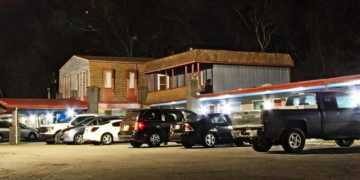For decades, the idea of flying cars has hovered at the edge of science fiction — always just out of reach, always “about ten years away.” From cartoon classics like The Jetsons to flashy concept designs at auto shows, people have long dreamed of ditching gridlocked highways in favor of cruising above the clouds.
Now, that dream may finally be on the verge of becoming reality.
What Is Personal Air Mobility?
Personal Air Mobility (PAM) refers to a new generation of small, electric aircraft — often called eVTOLs (electric Vertical Take-Off and Landing vehicles) — designed to carry a handful of passengers short distances, typically within a city or region. Think of them as air taxis: compact, quiet, and emissions-free.
These vehicles don’t require runways. They can lift off vertically like helicopters and land on helipads or even on rooftops. The goal is to ease congestion, shorten commutes, and open up a new layer of airspace for everyday travel.
Where Are They Being Used?
While you’re not likely to see flying cars at your local dealership just yet, testing and pilot projects are already underway around the world:
- Dayton, Ohio – Home to Wright-Patterson Air Force Base and a major aerospace corridor, the region is becoming a hub for air mobility innovation. Companies are conducting tests and exploring partnerships with smaller airports. Due to its historical namesake, it’s the perfect place to introduce the world to flying cars.
- Dubai – A longtime champion of futuristic tech, Dubai has tested autonomous air taxis and continues to invest in flying vehicle infrastructure.
- Los Angeles and Miami – Both cities are working with companies like Joby Aviation and Archer Aviation to develop “vertiports” and prepare for eventual passenger service.
How Will They Work?
Imagine this: You book a ride via an app — like Uber, but airborne. Instead of getting into a car, you hop into a sleek, battery-powered aircraft at a nearby launch pad. Within minutes, you’re soaring above the freeway traffic, landing closer to your destination than any train or bus could take you.
These trips would be short-range — often 25 to 100 miles — making them ideal for commutes between suburbs and cities or regional hops between places like Cincinnati and Portsmouth.
Pros: Why Some Are Excited
- Traffic Relief: Flying above the congestion could dramatically reduce travel times in urban areas.
- Eco-Friendly: eVTOLs are electric and much quieter than helicopters or jets.
- Accessibility: Smaller, rural airports could see new life as hubs for regional air mobility.
- Economic Boost: New industries mean new jobs — from pilot training to aircraft maintenance and data centers to support operations.
Cons: The Skepticism Is Real
- Cost: The technology is still expensive, and it may take time before everyday consumers can afford to ride.
- Regulation and Safety: Air traffic control for thousands of flying vehicles is a logistical challenge that hasn’t been fully solved.
- Infrastructure: Cities will need to build vertiports, charging stations, and other support systems.
- Jobs: While high-tech jobs will be created, critics argue that solar fields and data centers may not generate enough employment to replace traditional manufacturing.
A Familiar Pattern?
Skeptics abound, but it’s worth remembering that many technologies we now take for granted once sounded far-fetched:
- Smartphones: A full computer in your pocket? Unthinkable just 25 years ago.
- GPS: Once military-only tech, now standard in cars, phones, and even watches.
- Electric Cars: Laughed at in the early 2000s — now overtaking gas vehicles in many markets.
Just because something seems futuristic doesn’t mean it’s not on the way.
So… Where’s My Flying Car?
It’s a fair question. People have been asking it since at least the 1950s. While there have been many false starts — from propeller-driven cars in the ’60s to wild concept designs that never left the drawing board — this time feels different.
With electric flight, AI navigation, and growing infrastructure investment, personal air mobility is no longer a pipe dream — it’s a project in motion.
Whether it becomes the new norm or just a premium service for the wealthy remains to be seen. But if history is any guide, today’s sci-fi is tomorrow’s everyday tech.
And who knows? The next time you’re stuck in traffic, you might find yourself glancing up and thinking, maybe next year.













































































